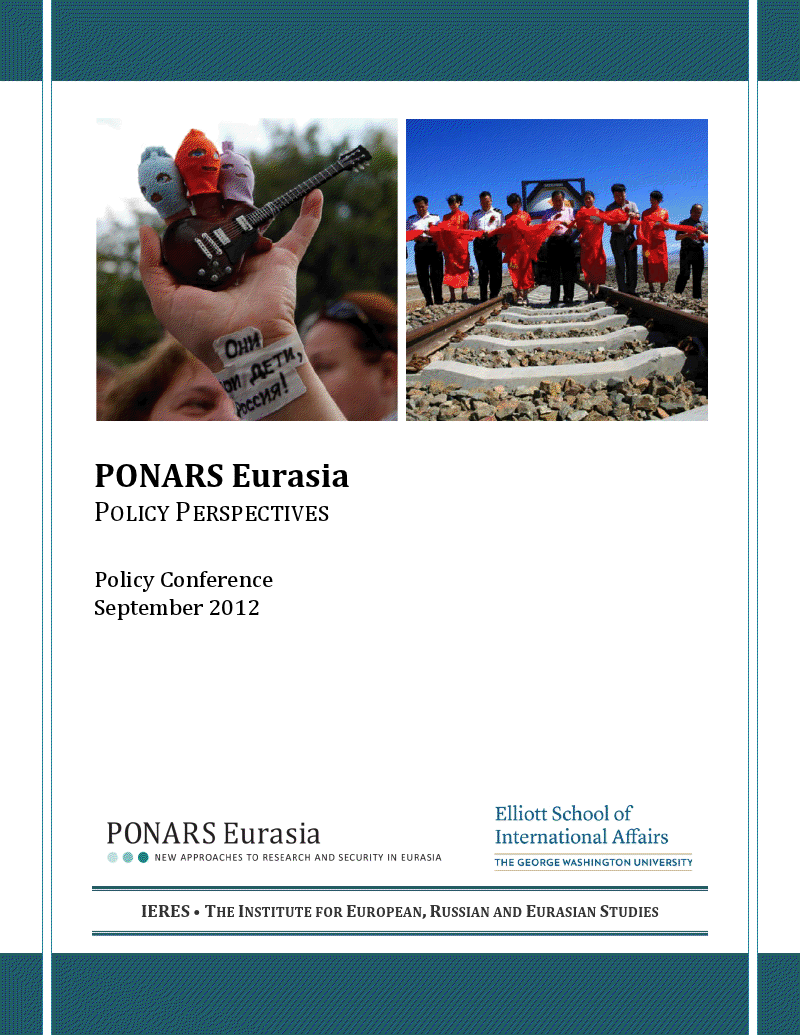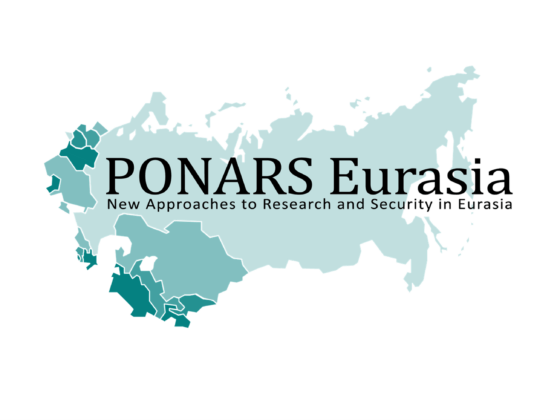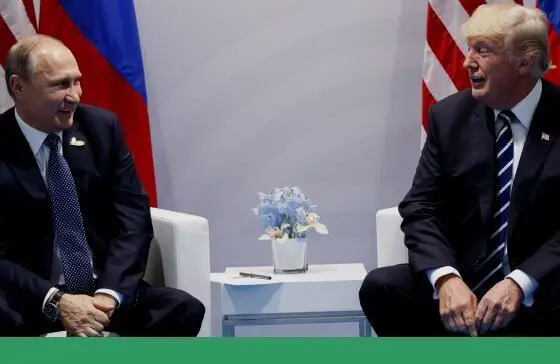Foreword
By Cory Welt
George Washington University
PONARS Eurasia (the Program on New Approaches to Research and Security in Eurasia) is an international network of academics that advances new policy approaches to research and security in Russia and Eurasia. This volume is PONARS Eurasia’s annual yearbook of Policy Perspectives. It consists of thirty-five Policy Memos covering an array of regional topics, including Russia’s year of protest and the future of leadership across Russia and Eurasia, cross-border trade in Central Asia and regional energy developments, Russia’s role in key matters of international security, the changing security landscape in the Caucasus, and policy options toward Ukraine and the EU-Russian neighborhood. The Policy Memos also serve as the basis for the 2012 PONARS Eurasia Policy Conference, held at George Washington University’s Elliott School of International Affairs and the Center for Strategic & International Studies (CSIS) in September 2012.
The collection is divided into eight parts. The first part, A Russian Spring? Protests and Public Opinion in Russia, discerns the degree to which anti-government protests reflect the attitudes of the Russian population at large. Drawing in part on original public opinion research, the five memos in this section caution against assuming antigovernment protestors represent the majority in Russia today, although they also argue that tidal shifts in public opinion remain possible. They also explain how Russian supporters of liberal democracy continue to contend with widespread public suspicion of foreign influences in Russia’s political life, a trend that might require a rethink of democracy promotion strategies.
The second part, Cross-Border Conflict and Cooperation in Central Asia, explores issues of conflict, cooperation, and trade across Central Asia, China, and Afghanistan. Two memos look at the role of China. One argues that while Chinese energy trade and infrastructure investment in Central Asia are beneficial, they can also diminish Western (and Russian) influence and reinforce the reluctance of Central Asian leaderships to carry out governance reforms. Another explores challenges to China’s role as a stakeholder in Afghanistan’s development: its failure to promote a multilateral regional strategy; the divergence of regional interests between China and Russia; and strains in China’s alliance with Pakistan. A third memo argues that a proper war on drugs in Afghanistan and Central Asia requires recognition that regimes and insurgents both are involved in the drug trade; that successfully combating it requires political will, not just technical means; and that there needs to be a focus on demand reduction and treatment. A four memo discusses a major potential flashpoint of regional conflict: the Tajik-Uzbek water trade.
The third part, The Future of Leadership: Russia, explores core pathologies of leadership in Russia today and reveals shifts in the structure of leadership in both the government and opposition. Two memos explore the challenge of enshrining integrity as a desirable quality in Russian politics and the ways in which “fake” political parties and politicians have obscured the field for real political competition. Other memos examine the phenomenon of “leaderless” protest movements and the rise of the grassroots; the uneasy synergy between (and at times merger of) liberal democratic and nationalist poles of antigovernment protest; and the changing rules of the game that have already begun to reinsert real politics into gubernatorial elections.
The collection’s fourth part, Russia’s Perimeter: Syria, Iran, and Japan, investigates three international security issues involving Russia: the Syrian uprising, efforts to halt Iran’s nuclear weapons program, and Russia’s dispute with Japan over the Kuril Islands. The first memo argues that the focus on Russian and Chinese opposition to UN action against the Syrian regime has been misguided; the course of Syrian affairs lies mainly in internal dynamics that international actions will only influence on the margins. A second memo explores whether the United States and Russia can overcome the contradiction between their shared interest in preventing Iran from developing nuclear weapons and their divergent strategies for doing so. The third memo unpacks the Kuril Islands dispute that continues to taint Russian-Japanese relations, exploring the history of the dispute, Russian and Japanese motivations in keeping it alive, and possible ways toward a solution.
The fifth part, The Future of Leadership: Ukraine, Kazakhstan, and the Caucasus, looks at the prospects for leadership change in Ukraine, Georgia, and Kazakhstan. One memo argues that Ukrainian electoral changes designed to strengthen the executive have had unexpected consequences, including weakening the ruling party and consolidating opposition forces. The next memo examines Georgia’s parliamentary election campaign, the opposition’s strengths and weaknesses, and the ruling party’s efforts to retain control through an election period that will lead to Georgia’s first ever peaceful transition of power. The third memo looks forward to an inevitable time of transition in Kazakhstan and the succession crisis that this will engender; it advises Kazakhstan’s elites to begin thinking now about how to manage a post-Nazarbayev democratic transition. A final memo explains differences in attitudes toward corruption and police reform in Georgia, Armenia, and the breakaway republic of Nagorno-Karabakh.
The sixth part, Designing Policy toward Ukraine and the EU-Russia Neighborhood, examines U.S., EU, and Russian policy toward Ukraine, as well as the EU’s overall “Eastern” policy. Two memos argue that the West has a choice to be firmer in its defense of democracy, governance, and human rights in Ukraine or to give up its efforts to integrate Ukraine into Western institutions. Advocating for the former, the memos argue that a more forceful stance toward Ukraine’s government will not result in some kind of geopolitical “loss” of Ukraine to Russia. A third memo looks at the underappreciated role of religious politics in Ukrainian-Russian relations, demonstrating how the contest over Ukraine’s geopolitical orientation is reflected in a divide within the country’s largest church (the autonomous Ukrainian Orthodox Church) on the proper degree of independence from the Moscow Patriarchate. How this contest is resolved could have a profound impact on Ukraine’s relations with Russia. A fourth memo looks at how the development of more modest visions of the EU’s future have affected relations with neighbors in Eastern Europe and Russia and why a German-Polish-Russian “trialogue” holds promise for cultivating a “win-win-win” policy in Eastern Europe.
The seventh part, Resolving Energy Trade Disputes in Eurasia, examines a set of relatively “quiet” energy trade disputes in Eurasia and prospects for their resolution. Two memos examine, respectively, Russian-Chinese and Azerbaijani-Turkish pipeline disputes, explaining the persistence of the former and the resolution of the latter. Another memo explains how political and geo-economic motivations have led Russia to resolve certain energy-related border disputes (as with Norway) but not others (in the Caspian). A final memo explores the internal conflict between Russian national oil companies (NOCs) and the government, whereby the former have resisted the international expansion plans of the latter. The memo argues that a government preference for internationalization reflects a global NOC norm rather than unique Kremlin ambitions.
The final part, The Caucasus: A Changing Security Landscape, examines issues of conflict and conflict resolution in the Caucasus. Two memos explore innovative prospects for resolution in the continued conflicts over Abkhazia and South Ossetia, while another considers the possibility of renewed hostilities over Nagorno-Karabakh and the means for preventing it. A fourth memo analyzes the increasingly tense relations of Azerbaijan and Iran. A final memo examines the ways in which fears of external intervention seep into domestic politics, distorting political competition, diminishing government accountability, and reinforcing rigid foreign policymaking.
We are sure you will find these policy memos informative and thought-provoking. Many individuals were instrumental in the production of this volume, as well as the organization of the 2012 PONARS Eurasia Policy Conference. In addition to all authors and conference participants, Prof. Henry Hale and I would like especially to thank Managing Editor Alexander Schmemann; Program Coordinator Olga Novikova; Graduate Research Assistant Jeanmarie O’Leary; IERES Executive Associate Caitlin Katsiaficas; and IERES Director Peter Rollberg. PONARS Eurasia, together with George Washington University’s Elliott School of International Affairs, expresses its deep appreciation to the International Program of Carnegie Corporation of New York and the John D. and Catherine T. MacArthur Foundation for their ongoing support.









